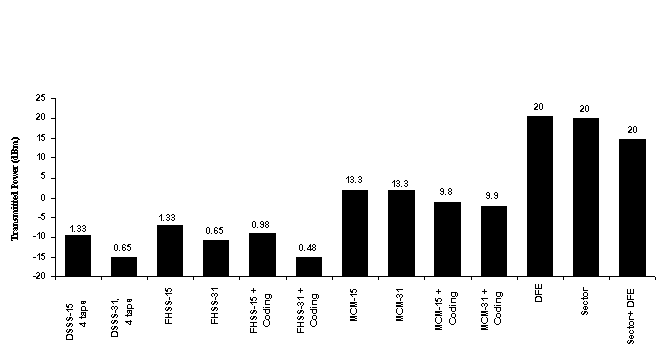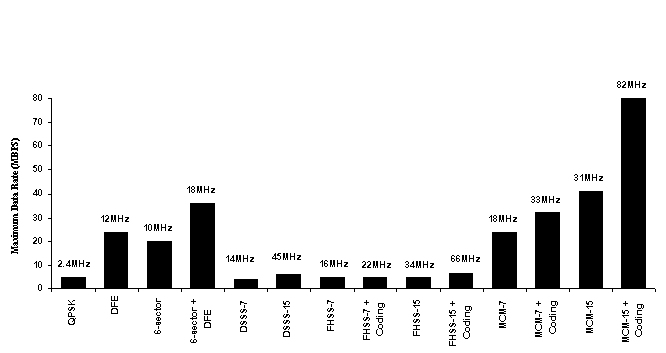Transmission Techniques for Wireless LANs
PI: Kaveh Pahlavan
Personnel: Aram Falsafi
Sponsored by CWINS
Results of ray-tracing in a typical indoor environment have been used to compare the performance of five radio transmission techniques that are under consideration as air-interface by standards bodies. The performance of direct-sequence and frequency-hopping spread spectrum are compared with the performance of multi-carrier modems, as well as modems using decision feedback equalization and sectored antenna systems. Validity of using ray-tracing for performance evaluation is examined by comparing the results with the results of performance evaluation obtained from the empirical wideband measurement of the channel characteristics. Using the definition of the JTC air-interface standard for indoor office environments, it is shown that the test area qualifies as a typical office environment with low to moderate delay spread. Based on the maximum achievable data rate and minimum power requirement, operation of all modems in bandlimited and power limited applications are discussed and compared.

Minimum power requirements for different transmission techniques, 10 MHz system bandwidth

Maximum attainable data rate for different transmission techniques with no bandwidth restrictions
References
- A. Falsafi, K. Pahlavan, G. Yang, "Transmission Techniques for Wireless LANs -- A Comparitive Performance Evaluation using Ray-Tracing", IEEE JSAC, April 1996. PDF file (1,471KB)
